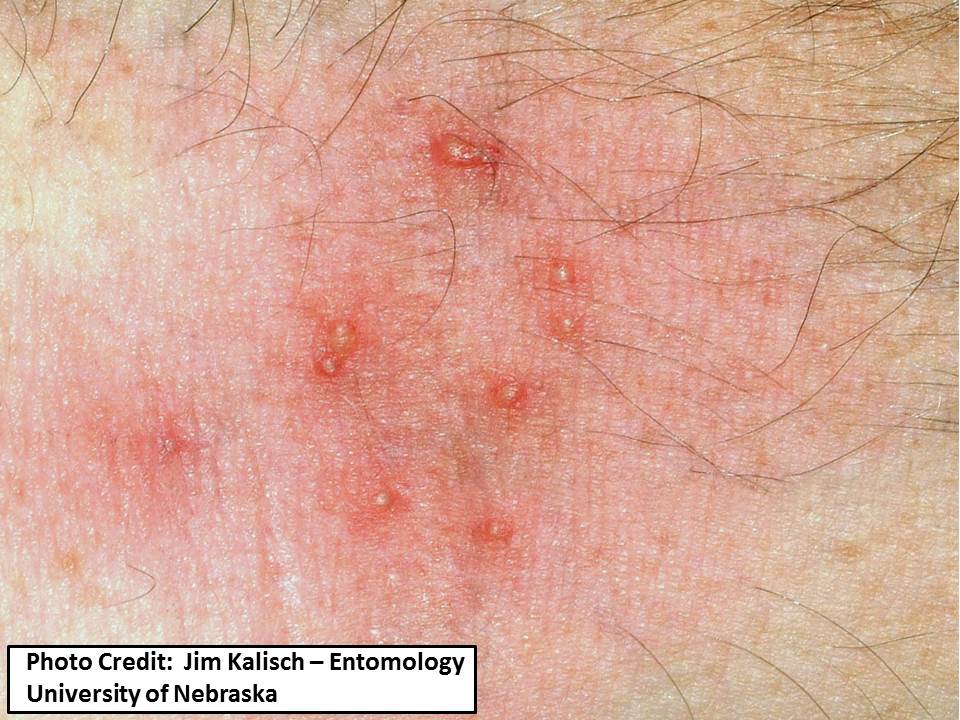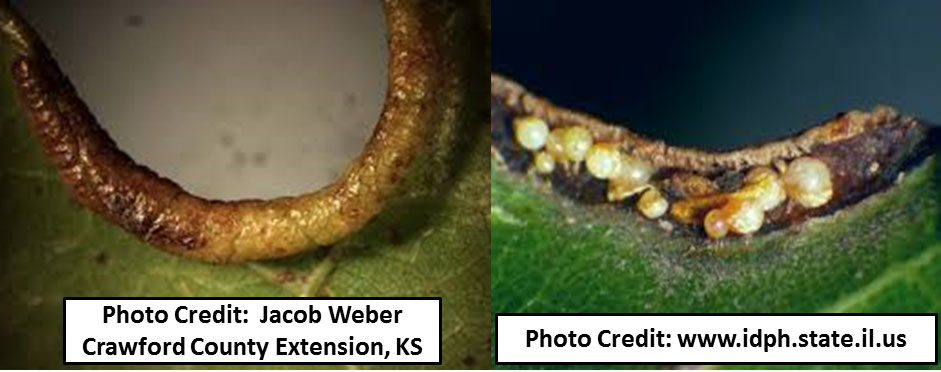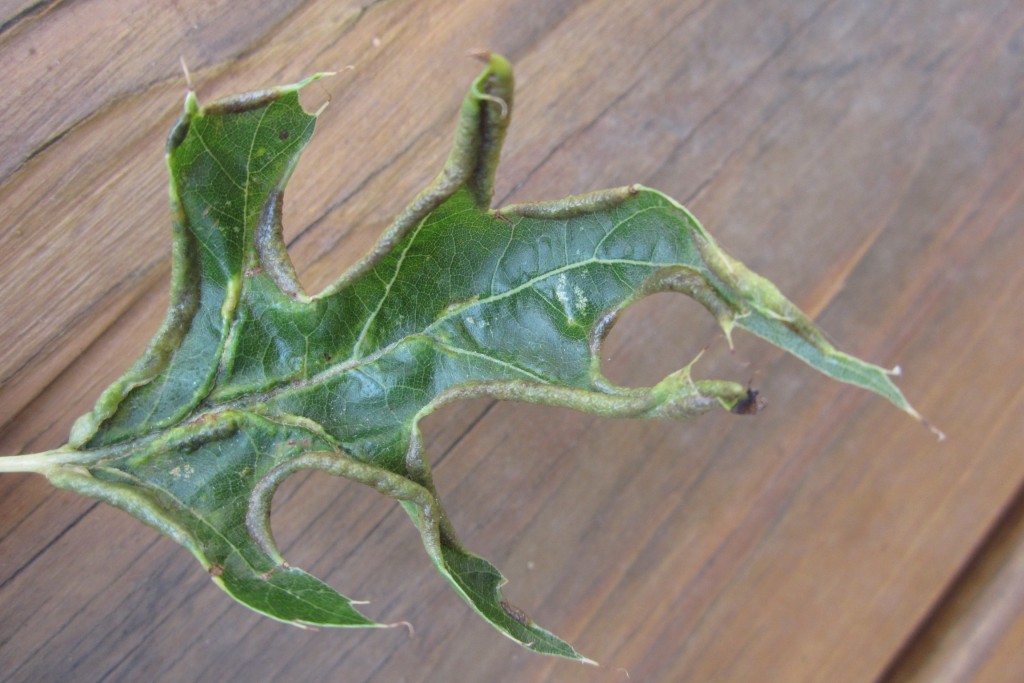(By Dr. Bob Bauernfeind: KSU Entomology)
Whereas scratching an itch sometimes provides satisfying (almost pleasurable) relief, at other times scratching an itch can be painful and distressing. The latter situation is attributable to the mite, Pyemotes herfsi (Oudeman).
Unlike chiggers which have been long-recognized for producing annoying but fleeting bouts of itchiness, mysterious “bites” causing raised quarter-sized reddened areas each with a centralized pinhead-size blister were of widespread occurrence in 2004 in various Midwestern states.
Through investigative studies, the aforementioned Pyemotes herfsi mites were identified as being responsible for the mysterious bites. Although the existence of these mites had been well known for multiple decades, the correlation between them and reported widespread occurrences of human discomfort was unknown. The severity of the 2004 outbreaks resulted in cooperative efforts between K-State and the University of Nebraska entomologists, the resultant being the identification of Pyemotes herfsi as responsible for the stressful skin disorders.
Pyemotes herfsi were recovered from marginal fold galls on (primarily) pin oak leaves. Marginal galls are associated with the larvae/maggots of tiny midges. That is, Pyemotes herfsi prey upon the midge larvae. The following side-by-side close-up images show an intact marginal gall, and a dissected gall revealing female Pyemotes herfsi. Despite their small size, they become readily visible due to their bulbous abdomens which can contain up to 200 offspring.
Due to their minuscule size compared to that of midge larvae, Pyemotes herfsipossess a potent neurotoxin used to paralyze their maggot hosts. This toxin is that which is responsible for initiating the skin irritations which cause discomfort in individuals upon which Pyemotes herfsi happen to come in contact with. Because Pyemotes herfsi are associated with the midge larvae responsible for marginal galls on oak leaves, Pyemotes herfsi have been given the common name, Oak Leaf Itch Mite. It is believed that oak leaf itch mites also prey upon the larvae of another closely related midge species responsible for the formation of vein pocket galls on the undersides of oak leaves. A full description of the oak leaf itch mite life cycle is available online by accessing Kansas State University Extension Publication MF2806.
The good news is that oak leaf itch mite populations may be extremely low or absent for years-on-end —— people can enjoy the outdoors without having to contend with oak leaf itch mite encounters. The bad news is that the reappearance/resurgence of oak leaf itch mite populations is unpredictable. There are various unknown factors as to the whys-and-where their populations are and when they will surge. Undoubtedly there are ever-present reservoir populations of oak leaf itch mites, but, where are they? Possibly a major factor for population explosions is contingent on fluctuating populations of the appropriate gall midges responsible for the formation of marginal galls and/or vein pocket galls. An intriguing question then would be, “How do the tiny mites detect and move to the galls up in tree canopies?”
More bad news: Each female oak leaf itch mite produces many progeny. And the developmental cycle is reported to be just 7 days. The resultant is the production of uncountable numbers of oak leaf itch mites which ultimately leave the confines of leaf galls. Passive dispersal via air currents is the bane to people, especially those in neighborhoods where pin oaks constitute the main trees species.
The bad news continues: There is a wide time frame during which encounters with oak leaf itch mite might occur. It is not only the initial late summer encounters, but the presence of oak leaf itch mites extending well into the fall when people are raking leaves and kids having fun playing in leaf piles.
And if this is not enough negativity regarding oak leaf itch mites, there is little to be done (well, actually nothing to be done) in treating and reducing/eliminating their populations. THEY WILL HAVE THEIR WAY!
The people who are most likely to encounter oak leaf itch mites will be those in living in areas/neighborhoods where oaks (again, especially pin oaks) are the dominant tree species. When oak leaf itch mite populations are excessive, restricting outdoor activities is one method of reducing the risk of exposure. While the use of repellents may work against annoying insect species which actively seek a host, repellents have little effect against oak leaf itch mites which are passively dispersed, and lack the ability to alter their course/direction. It has been suggested that susceptible individuals (yes, some people do not have negative reactions to oak leaf itch mite bites) spend as little outdoor time as possible. And showers immediately upon returning indoors might eliminate/wash off mites before they bite and cause reactions.
Individuals experiencing oak leaf itch mite encounters might utilize medications and lotions so designed to provide relief from itching discomfort as well as secondary infections of excoriated areas. Seek advice and recommendations from appropriate personnel.





